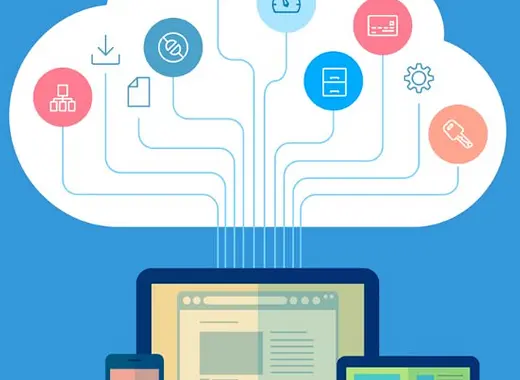BLOG
Are you searching for ways to lift your customer satisfaction scores? How about improving employee retention? One way to do it is to move more of your practice applications to the cloud. According to the American Dental Association, close to 34% of dentists affiliated with DSOs are between the ages of 21-49. This signifies that many of your providers and staff are considered digital natives, meaning they have grown up with technology. For some, their first cell phone was an iPhone. They have used cloud-based applications like photo-sharing sites and social media, music, and video streaming for years. They are even filing their taxes in the cloud and are comfortable living with cloud-based technology as an enhancer.
Healthcare experiences are going digital, but what does it mean to be cloud-based? Operating in cloud-based software means that your servers are not housed within the walls of your office. Instead, you are paying a third party to host your data securely. Keeping your software servers on-site or on-premise isn’t entirely wrong, either. You may determine it’s the best situation for your unique practice. Let’s examine some differences.
| Resource Needs | Cloud-based Software | On-Premise Software |
| Investment | Less upfront investment, you pay for server space as you need it, but there are monthly fees. | Large upfront capital expenditures are usually required as well as high-cost maintenance. |
| IT Resources | Less internal resources are needed, and the vendor provides maintenance and updates. | IT and development resources are needed from your team to monitor, maintain, and deploy fixes when necessary. |
| Safety and Security | Cloud vendors take extra caution to stay current on required security and compliance mandates. Their business depends on it. | Your team is the primary resource when an event threatens data security. |
| Data Recovery | Cloud software is always backed up, so data lost in an outage is recoverable. | Oftentimes with a security event or theft, data cannot be recovered. |
In today’s dental landscape, it is common for practices to have a hybrid approach to software use. Not everything is on the cloud, and sometimes migrating legacy systems can be an expensive, time-consuming, and resource-heavy undertaking. Many practices choose to take it one application at a time. Here are three reasons to consider moving your software to a cloud-based platform.
1. Cloud-based technology allows you to serve your patients better
When a patient has an urgent need outside of office hours, you may not need to leave the comfort of your home to provide the appropriate level of care. The digital portability of dental practice tools can benefit patients and help them feel like a valued part of your practice. You can reschedule appointments, send images, securely converse about treatment plans, and provide better service with the data you need at your fingertips. Deliver care right from your phone or tablet for immediate responses.
We know the value of a five-star review. When you provide exceptional service or help a patient through a medical moment by quickly providing empathy, reassurance, and relief, they tend to share their gratitude. This often happens through a very public positive rating.
2. Help your providers find some balance between work, life, and learning
Often, providers feel tethered to the demands of their patients, their staff, and the day-to-day operations of their practices. It’s hard to break away for vacations with family and friends or even learning opportunities like professional conferences. The more operational you can make your practice from afar, the easier it becomes to get away for a bit.
For instance, cloud-based applications can be accessed from anywhere within the software architecture. The ability for the provider to prescribe while they are out of the office gives the entire staff peace of mind. Imagine a patient is experiencing a reaction to a medication you prescribed—if the application is cloud-based, within a few clicks, you can send the new prescription to the pharmacy.
Critical work can get done if an emergency patient intervention is needed without a required office visit in the middle of the night or on holidays.
3. Get additional data safeguards when moving to cloud-based computing
Healthcare requires strict security measures because a breach can be detrimental to your operations. While you can’t control everything, working in the cloud can offer additional layers of data protection. Has your team documented and practiced a disaster recovery plan for your legacy software? If they haven’t already, they should. For cloud-based providers, this is necessary to stay compliant. If their systems go down, there are already protocols in place to limit the disruptions it can cause. Cloud and SaaS applications have teams of people whose only role is to proactively identify security weaknesses and patch them before they become a problem. Think iOS updates for iPhone users.
What would you do if your legacy systems or on-premise servers became damaged from a weather event or even theft? Is your data backed up? Sometimes malfunctions occur simply with age-related deterioration of hardware. When working within the cloud, there are backup systems of the backup system. Total data loss is rare.
Getting Started
As you modernize your dental practices, don’t forget to evaluate your computing hardware and software. Operating in the cloud can help future-proof your business and build a technologically savvy partner ecosystem more easily. The developments in cloud-based technology are not going away. Gartner predicts that by 2026 cloud spending will surpass 45% of all enterprise IT spending. You can start with one program at a time. If you choose to start with ePrescribing, DoseSpot is here to help.

